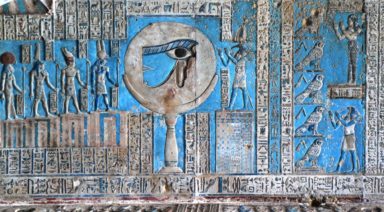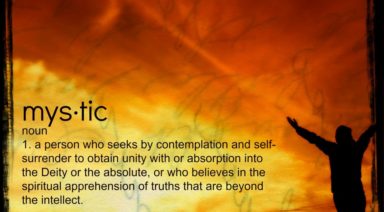How Do You Become a Shaman? A Beginner Practitioner’s Guide

Shamanism is one of the world’s oldest spiritual practices, with origins dating back thousands of years to Siberia, Central Asia, and Indigenous cultures across the Americas, Africa, and Australia. Its roots run deep with the natural and spirit worlds, shamanism has long served as a means of healing, guidance, and communion with unseen realms.
Today, many seekers feel called to explore this path not as a profession but as a profound journey of spiritual awakening and service. Whether inspired by ancient traditions or drawn by a modern sense of spiritual purpose, the path to becoming a shaman begins with an inner calling and a willingness to walk between worlds.
What is a Shaman?
A shaman is a spiritual practitioner and healer who bridges the physical and spiritual worlds to help others. In many Indigenous cultures, shamans are known for their ability to enter altered states of consciousness—often through trance, meditation, rhythmic drumming, or plant medicine—to communicate with spirits, receive guidance, and perform healing practices. They tap into the seen and unseen realms, using ancient techniques to restore harmony and well-being within individuals and communities.
Though shamanism varies across different cultures, the core principles remain consistent: shamans journey to the spirit world, retrieve lost knowledge or parts of the soul, and return with wisdom that promotes healing, clarity, and spiritual growth.
What Does a Shaman Do?
Shamans serve their communities in many vital roles, drawing upon their connection with the spirit world to offer healing, insight, and guidance. Their duties often include:
- Healing the Sick: Shamans believe illness may stem from spiritual imbalances, soul loss, or negative energies. Through rituals, energy healing, and soul retrieval, they work to restore health and wholeness.
- Spiritual Guidance: Shamans offer counsel, helping individuals navigate emotional challenges, life transitions, or spiritual crises by receiving messages from spirits or power animals.
- Conducting Rituals and Ceremonies: These may include blessings, purification, protection, or rites of passage to support individuals and communities.
- Divination: Using tools such as stones, bones, or direct spirit communication, shamans interpret signs to provide insight into present or future concerns.
- Psychopomp Work: Some shamans guide the souls of the deceased to the afterlife, ensuring a peaceful transition between worlds.
- Maintaining Harmony with Nature: Shamans often act as stewards of the Earth, communicating with natural forces and emphasizing balance with the natural world.
Whether in Indigenous cultures or modern spiritual communities, the role of the shaman is one of deep responsibility—offering healing and preserving sacred knowledge.
Hearing the Call: Can Anyone Be a Shaman?
Traditionally, becoming a shaman is not considered a personal choice but a spiritual calling. Many shamanic cultures believe individuals are chosen by the spirits, often through a “shaman illness,” near-death experience, or vivid dreams that signify an awakening to their path. This transformative event initiates the potential shaman into a journey of self-discovery and service.
While some modern seekers pursue shamanism as a spiritual practice or personal development path, the traditional view holds that ignoring the call can lead to emotional or physical turmoil. Acceptance of this calling often marks the beginning of shamanic training.
The Journey to Becoming a Shaman
The shamanic path to becoming a practitioner is both inward and outward—marked by spiritual awakening, mentorship, and disciplined practice. While each path is unique, there are common steps that many follow to cultivate the skills and wisdom needed for this sacred role.
Seek a Teacher or Mentor
True shamanic training often begins with mentorship. In Indigenous cultures, aspiring shamans undergo long apprenticeships under experienced elders. Today, some may train in person or through a reputable program, such as those offered by The Foundation for Shamanic Studies, founded by anthropologist Michael Harner. These training programs teach core shamanism and fundamental techniques like shamanic journeying, soul retrieval, and divination.
Mentorship is essential not just for safety in navigating the unseen world, but for transmitting sacred knowledge with integrity. A teacher with real experience can guide the student through deep personal transformation and spiritual initiation.
Training and Initiation
Shamanic training may involve years of disciplined practice, including:
- Learning to connect with spirit guides and power animals
- Practicing soul retrieval and energy healing
- Participating in sacred ceremonies and rituals
- Engaging in deep personal healing and shadow work
- Studying the natural world and spirit realms
This path may also include working with plant medicine such as ayahuasca, under proper guidance, to access spirit realms and accelerate healing. However, this is not required by all traditions.
Tools and Techniques of a Shaman
Modern and traditional shamans alike use tools that assist in entering trance states and performing healing work:
- Drums and Rattles: Induce altered states and guide shamanic journeys
- Feathers: Used in energy clearing and as symbols of connection to bird spirits
- Crystals: Amplify energy healing and spiritual insight
- Plant Allies: Include sacred herbs like sage or ceremonial plant medicine like ayahuasca
- Sacred Songs and Chants (Icaros): Invoked to call on spirits and enhance healing
- Gongs and Singing Bowls: Create vibrational frequencies that open energy channels
Shamanic Practices and Responsibilities
The practice of shamanism includes a wide range of spiritual and healing techniques:
- Shamanic Journeying: Traveling to the spirit world to receive guidance or retrieve knowledge
- Soul Retrieval: Reintegrating fragmented parts of the soul to restore wholeness
- Divination: Gaining insight through spiritual tools or spirit communication
- Spiritual Healing: Using energy healing, ceremony, or guidance from spirit allies to promote well-being
A shaman is also a guardian of their community, often tasked with preserving shamanic traditions, facilitating rites of passage, and maintaining harmony with the natural world.
A Way of Life, Not a Title
Being a shamanic practitioner is a lifelong spiritual path, not a profession or weekend pursuit. It requires humility, personal integrity, and a sincere devotion to the healing of others and the Earth. The shaman must undergo continual personal growth, learn to navigate the unseen world safely, and remain grounded in service.
In the Western world, those who practice shamanism may also integrate complementary healing modalities such as Reiki or energy work. The path of a shamanic healer is one of ongoing spiritual development, often requiring the courage to stand apart from societal norms in order to serve a greater spiritual truth.
If you feel the call, know that the path may be challenging—but also deeply rewarding. Through commitment, proper guidance, and an open heart, anyone drawn to this path can begin the journey into shamanic practice and explore the mysteries of the spirit world.
Exploring the Sacred Four Directions and Medicine Wheel in Native American Culture

The Native American tradition of recognizing the Four Directions—East, South, West, and North—and the central concept of the Medicine Wheel capture profound spiritual significance and cultural values across numerous indigenous communities. This revered system honors not only the physical elements of the world but also the stages of life, sacred directions, and the cycles of life inherent in Mother Earth. This article delves into the symbolism of each direction and the comprehensive meaning of the Medicine Wheel in Native American tradition.
Insights into the Four Directions
Each of the cardinal directions holds a unique symbolic meaning across many Native American traditions. The directions are commonly associated with specific colors, elements, animals, life stages, seasons, sacred plants, and spiritual attributes. While interpretations may vary by tribe, the following reflects widely recognized associations:
East – Air
- Color: Yellow
- Animal: Eagle
- Element: Air
- Season: Spring
- Life Stage: Birth / New Beginnings
- Sacred Plant: Tobacco or Sweetgrass
- Significance: East represents the rising sun, clarity, wisdom, and new beginnings. It is the direction of vision, spiritual insight, and awakening—energizing the day with light and understanding.
South – Water
- Color: Red
- Animal: Buffalo
- Element: Water
- Season: Summer
- Life Stage: Youth
- Sacred Plant: Cedar
- Significance: South symbolizes warmth, trust, and emotional growth. Aligned with water, it reflects fluidity, learning through experience, and the nurturing energy of summer.
West – Earth
- Color: Black
- Animal: Bear
- Element: Earth
- Season: Autumn
- Life Stage: Adulthood / Maturity
- Sacred Plant: Sage
- Significance: West is associated with introspection, grounding, and maturity. As the sun sets, it invites reflection and connection to the natural world, offering wisdom through self-awareness.
North – Fire
- Color: White
- Animal: Moose
- Element: Fire
- Season: Winter
- Life Stage: Elderhood / Wisdom
- Sacred Plant: Sweetgrass or Sage
- Significance: North represents endurance, cleansing, and transformation. It is a place of strength and resilience, where fire symbolizes purification and the wisdom gained through life’s challenges.





































